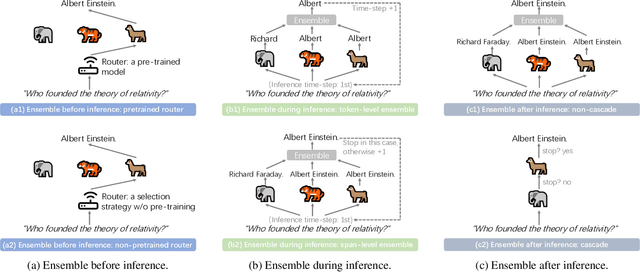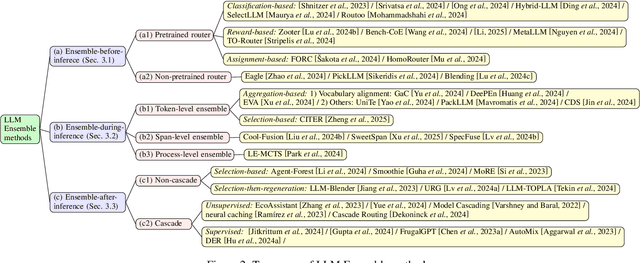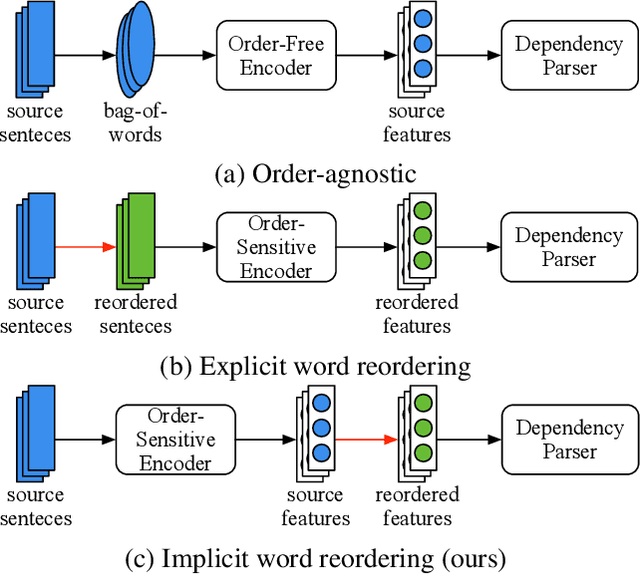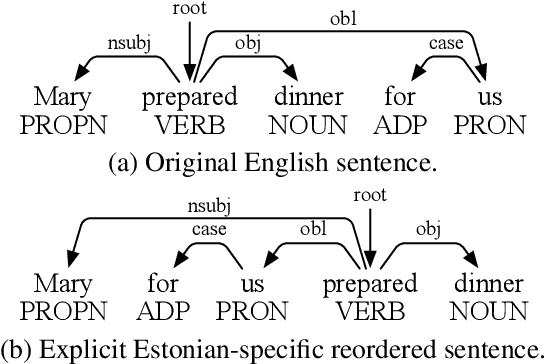Zhuoran Li
Radiation Pattern Reconfigurable FAS-Empowered Interference-Resilient UAV Communication
Oct 01, 2025Abstract:The widespread use of uncrewed aerial vehicles (UAVs) has propelled the development of advanced techniques on countering unauthorized UAV flights. However, the resistance of legal UAVs to illegal interference remains under-addressed. This paper proposes radiation pattern reconfigurable fluid antenna systems (RPR-FAS)-empowered interference-resilient UAV communication scheme. This scheme integrates the reconfigurable pixel antenna technology, which provides each antenna with an adjustable radiation pattern. Therefore, RPR-FAS can enhance the angular resolution of a UAV with a limited number of antennas, thereby improving spectral efficiency (SE) and interference resilience. Specifically, we first design dedicated radiation pattern adapted from 3GPP-TR-38.901, where the beam direction and half power beamwidth are tailored for UAV communications. Furthermore, we propose a low-storage-overhead orthogonal matching pursuit multiple measurement vectors algorithm, which accurately estimates the angle-of-arrival (AoA) of the communication link, even in the single antenna case. Particularly, by utilizing the Fourier transform to the radiation pattern gain matrix, we design a dimension-reduction technique to achieve 1--2 order-of-magnitude reduction in storage requirements. Meanwhile, we propose a maximum likelihood interference AoA estimation method based on the law of large numbers, so that the SE can be further improved. Finally, alternating optimization is employed to obtain the optimal uplink radiation pattern and combiner, while an exhaustive search is applied to determine the optimal downlink pattern, complemented by the water-filling algorithm for beamforming. Comprehensive simulations demonstrate that the proposed schemes outperform traditional methods in terms of angular sensing precision and spectral efficiency.
OM2P: Offline Multi-Agent Mean-Flow Policy
Aug 08, 2025Abstract:Generative models, especially diffusion and flow-based models, have been promising in offline multi-agent reinforcement learning. However, integrating powerful generative models into this framework poses unique challenges. In particular, diffusion and flow-based policies suffer from low sampling efficiency due to their iterative generation processes, making them impractical in time-sensitive or resource-constrained settings. To tackle these difficulties, we propose OM2P (Offline Multi-Agent Mean-Flow Policy), a novel offline MARL algorithm to achieve efficient one-step action sampling. To address the misalignment between generative objectives and reward maximization, we introduce a reward-aware optimization scheme that integrates a carefully-designed mean-flow matching loss with Q-function supervision. Additionally, we design a generalized timestep distribution and a derivative-free estimation strategy to reduce memory overhead and improve training stability. Empirical evaluations on Multi-Agent Particle and MuJoCo benchmarks demonstrate that OM2P achieves superior performance, with up to a 3.8x reduction in GPU memory usage and up to a 10.8x speed-up in training time. Our approach represents the first to successfully integrate mean-flow model into offline MARL, paving the way for practical and scalable generative policies in cooperative multi-agent settings.
Reparameterization Proximal Policy Optimization
Aug 08, 2025



Abstract:Reparameterization policy gradient (RPG) is promising for improving sample efficiency by leveraging differentiable dynamics. However, a critical barrier is its training instability, where high-variance gradients can destabilize the learning process. To address this, we draw inspiration from Proximal Policy Optimization (PPO), which uses a surrogate objective to enable stable sample reuse in the model-free setting. We first establish a connection between this surrogate objective and RPG, which has been largely unexplored and is non-trivial. Then, we bridge this gap by demonstrating that the reparameterization gradient of a PPO-like surrogate objective can be computed efficiently using backpropagation through time. Based on this key insight, we propose Reparameterization Proximal Policy Optimization (RPO), a stable and sample-efficient RPG-based method. RPO enables multiple epochs of stable sample reuse by optimizing a clipped surrogate objective tailored for RPG, while being further stabilized by Kullback-Leibler (KL) divergence regularization and remaining fully compatible with existing variance reduction methods. We evaluate RPO on a suite of challenging locomotion and manipulation tasks, where experiments demonstrate that our method achieves superior sample efficiency and strong performance.
On Path to Multimodal Historical Reasoning: HistBench and HistAgent
May 26, 2025Abstract:Recent advances in large language models (LLMs) have led to remarkable progress across domains, yet their capabilities in the humanities, particularly history, remain underexplored. Historical reasoning poses unique challenges for AI, involving multimodal source interpretation, temporal inference, and cross-linguistic analysis. While general-purpose agents perform well on many existing benchmarks, they lack the domain-specific expertise required to engage with historical materials and questions. To address this gap, we introduce HistBench, a new benchmark of 414 high-quality questions designed to evaluate AI's capacity for historical reasoning and authored by more than 40 expert contributors. The tasks span a wide range of historical problems-from factual retrieval based on primary sources to interpretive analysis of manuscripts and images, to interdisciplinary challenges involving archaeology, linguistics, or cultural history. Furthermore, the benchmark dataset spans 29 ancient and modern languages and covers a wide range of historical periods and world regions. Finding the poor performance of LLMs and other agents on HistBench, we further present HistAgent, a history-specific agent equipped with carefully designed tools for OCR, translation, archival search, and image understanding in History. On HistBench, HistAgent based on GPT-4o achieves an accuracy of 27.54% pass@1 and 36.47% pass@2, significantly outperforming LLMs with online search and generalist agents, including GPT-4o (18.60%), DeepSeek-R1(14.49%) and Open Deep Research-smolagents(20.29% pass@1 and 25.12% pass@2). These results highlight the limitations of existing LLMs and generalist agents and demonstrate the advantages of HistAgent for historical reasoning.
Proxy-Free GFlowNet
May 26, 2025Abstract:Generative Flow Networks (GFlowNets) are a promising class of generative models designed to sample diverse, high-reward structures by modeling distributions over compositional objects. In many real-world applications, obtaining the reward function for such objects is expensive, time-consuming, or requires human input, making it necessary to train GFlowNets from historical datasets. Most existing methods adopt a model-based approach, learning a proxy model from the dataset to approximate the reward function. However, this strategy inherently ties the quality of the learned policy to the accuracy of the proxy, introducing additional complexity and uncertainty into the training process. To overcome these limitations, we propose \textbf{Trajectory-Distilled GFlowNet (TD-GFN)}, a \emph{proxy-free} training framework that eliminates the need for out-of-dataset reward queries. Our method is motivated by the key observation that different edges in the associated directed acyclic graph (DAG) contribute unequally to effective policy learning. TD-GFN leverages inverse reinforcement learning to estimate edge-level rewards from the offline dataset, which are then used to ingeniously prune the DAG and guide backward trajectory sampling during training. This approach directs the policy toward high-reward regions while reducing the complexity of model fitting. Empirical results across multiple tasks show that TD-GFN trains both efficiently and reliably, significantly outperforming existing baselines in convergence speed and sample quality.
Chirp Delay-Doppler Domain Modulation: A New Paradigm of Integrated Sensing and Communication for Autonomous Vehicles
May 22, 2025Abstract:Autonomous driving is reshaping the way humans travel, with millimeter wave (mmWave) radar playing a crucial role in this transformation to enabe vehicle-to-everything (V2X). Although chirp is widely used in mmWave radar systems for its strong sensing capabilities, the lack of integrated communication functions in existing systems may limit further advancement of autonomous driving. In light of this, we first design ``dedicated chirps" tailored for sensing chirp signals in the environment, facilitating the identification of idle time-frequency resources. Based on these dedicated chirps, we propose a chirp-division multiple access (Chirp-DMA) scheme, enabling multiple pairs of mmWave radar transceivers to perform integrated sensing and communication (ISAC) without interference. Subsequently, we propose two chirp-based delay-Doppler domain modulation schemes that enable each pair of mmWave radar transceivers to simultaneously sense and communicate within their respective time-frequency resource blocks. The modulation schemes are based on different multiple-input multiple-output (MIMO) radar schemes: the time division multiplexing (TDM)-based scheme offers higher communication rates, while the Doppler division multiplexing (DDM)-based scheme is suitable for working in a lower signal-to-noise ratio range. We then validate the effectiveness of the proposed DDM-based scheme through simulations. Finally, we present some challenges and issues that need to be addressed to advance ISAC in V2X for better autonomous driving. Simulation codes are provided to reproduce the results in this paper: \href{https://github.com/LiZhuoRan0/2025-IEEE-Network-ChirpDelayDopplerModulationISAC}{https://github.com/LiZhuoRan0}.
MmWave-LoRadar Empowered Vehicular Integrated Sensing and Communication Systems: LoRa Meets FMCW
May 16, 2025Abstract:The integrated sensing and communication (ISAC) technique is regarded as a key component in future vehicular applications. In this paper, we propose an ISAC solution that integrates Long Range (LoRa) modulation with frequency-modulated continuous wave (FMCW) radar in the millimeter-wave (mmWave) band, called mmWave-LoRadar. This design introduces the sensing capabilities to the LoRa communication with a simplified hardware architecture. Particularly, we uncover the dual discontinuity issues in time and phase of the mmWave-LoRadar received signals, rendering conventional signal processing techniques ineffective. As a remedy, we propose a corresponding hardware design and signal processing schemes under the compressed sampling framework. These techniques effectively cope with the dual discontinuity issues and mitigate the demands for high-sampling-rate analog-to-digital converters while achieving good performance. Simulation results demonstrate the superiority of the mmWave-LoRadar ISAC system in vehicular communication and sensing networks.
Building a Human-Verified Clinical Reasoning Dataset via a Human LLM Hybrid Pipeline for Trustworthy Medical AI
May 11, 2025Abstract:Despite strong performance in medical question-answering, the clinical adoption of Large Language Models (LLMs) is critically hampered by their opaque 'black-box' reasoning, limiting clinician trust. This challenge is compounded by the predominant reliance of current medical LLMs on corpora from scientific literature or synthetic data, which often lack the granular expert validation and high clinical relevance essential for advancing their specialized medical capabilities. To address these critical gaps, we introduce a highly clinically relevant dataset with 31,247 medical question-answer pairs, each accompanied by expert-validated chain-of-thought (CoT) explanations. This resource, spanning multiple clinical domains, was curated via a scalable human-LLM hybrid pipeline: LLM-generated rationales were iteratively reviewed, scored, and refined by medical experts against a structured rubric, with substandard outputs revised through human effort or guided LLM regeneration until expert consensus. This publicly available dataset provides a vital source for the development of medical LLMs that capable of transparent and verifiable reasoning, thereby advancing safer and more interpretable AI in medicine.
Harnessing Multiple Large Language Models: A Survey on LLM Ensemble
Feb 25, 2025



Abstract:LLM Ensemble -- which involves the comprehensive use of multiple large language models (LLMs), each aimed at handling user queries during downstream inference, to benefit from their individual strengths -- has gained substantial attention recently. The widespread availability of LLMs, coupled with their varying strengths and out-of-the-box usability, has profoundly advanced the field of LLM Ensemble. This paper presents the first systematic review of recent developments in LLM Ensemble. First, we introduce our taxonomy of LLM Ensemble and discuss several related research problems. Then, we provide a more in-depth classification of the methods under the broad categories of "ensemble-before-inference, ensemble-during-inference, ensemble-after-inference", and review all relevant methods. Finally, we introduce related benchmarks and applications, summarize existing studies, and suggest several future research directions. A curated list of papers on LLM Ensemble is available at https://github.com/junchenzhi/Awesome-LLM-Ensemble.
Implicit Word Reordering with Knowledge Distillation for Cross-Lingual Dependency Parsing
Feb 24, 2025



Abstract:Word order difference between source and target languages is a major obstacle to cross-lingual transfer, especially in the dependency parsing task. Current works are mostly based on order-agnostic models or word reordering to mitigate this problem. However, such methods either do not leverage grammatical information naturally contained in word order or are computationally expensive as the permutation space grows exponentially with the sentence length. Moreover, the reordered source sentence with an unnatural word order may be a form of noising that harms the model learning. To this end, we propose an Implicit Word Reordering framework with Knowledge Distillation (IWR-KD). This framework is inspired by that deep networks are good at learning feature linearization corresponding to meaningful data transformation, e.g. word reordering. To realize this idea, we introduce a knowledge distillation framework composed of a word-reordering teacher model and a dependency parsing student model. We verify our proposed method on Universal Dependency Treebanks across 31 different languages and show it outperforms a series of competitors, together with experimental analysis to illustrate how our method works towards training a robust parser.
 Add to Chrome
Add to Chrome Add to Firefox
Add to Firefox Add to Edge
Add to Edge